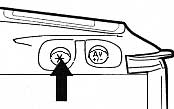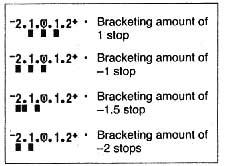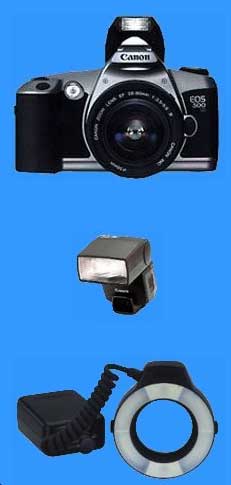Advanced Modes

AE LOCK (Partial Metering)
You can lock the Exposure, recompose and refocus the picture, without altering the Auto Exposure (AE) setting.
EXPOSURE COMPENSATION
You can override the exposure set by the camera at the press of a button. This can be applied to darken or l
ighten a picture as you choose.
MULTIPLE EXPOSURES
Several images on a single frame can be achieved by not advancing the film.
BULB EXPOSURE
Primarily for capturing night scenes, this mode exposes the film for as long as
the Shutterbutton is held down, usually in excess of 30 secs. To avoid camera shake,
a tripod and remote release are essential.
AUTO EXPOSURE BRACKETING (AEB)
In ‘contrasty’ situations you may be unsure of what the correct exposure ought
to be . The AEB function will set a correct, under and over Exposure in chosen stop increments.


TAKING PICTURES
Seeing the light. The most crucial element of a good photograph is light, be
it natural or artificial. The early morning and late afternoon light is usually
better for it’s softness and shadow, the midday sun is harsh and bright and
produces flat images. However, you should be aware of the effects of the
changing quality of daylight - a passing cloud can alter conditions
dramatically. That’s when you may need a burst of ‘fill in’ flash,
either from your ‘on camera’ flash unit or by attaching a flashgun to
the camera’s hotshoe. Flash will ‘fill in’ unwanted shadows or brighten a dull scene.
Most built in flash units are not powerful enough to light a night time scene and , due to
the close proximity to the lens, tend to cause ‘red-eye’ (you know- those shots where your
children actually look like little devils). To overcome these problems, a dedicated flashgun
is recommended - used either on camera or off (via an attached ‘off shoe extension cord’) or
with or without a diffuser. For indoor use, some flashguns have a ‘bounce’ facility which
enables you to tilt the flash head upwards and ‘bounce’ the light off a ceiling. So now you’re
inside ‘bouncing light off ceilings’ try some close up or macro work using your ‘off camera’ flash or ringflash.



